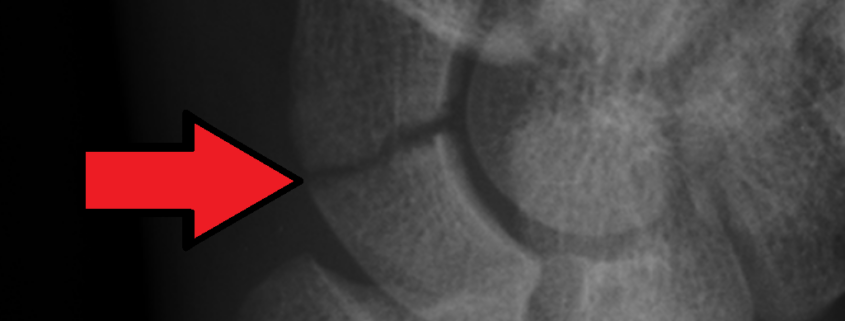
Scaphoid Fracture of the Wrist
Overview
A scaphoid fracture of the wrist is a break in the small bone (scaphoid) on the thumb side of your wrist. This injury often occurs when you fall on an outstretched hand. Due to its location and blood supply, it can sometimes be difficult to diagnose and may not heal properly without the appropriate treatment.
Types
While there isn’t a subtype of scaphoid fracture, they are classified based on their location in the bone:
1. Proximal pole: These fractures happen near the end of the scaphoid closest to the forearm. They are less common but more complicated due to the limited blood supply to this part of the bone.
2. Waist: Located in the middle of the scaphoid, this is the most common site of fractures.
3. Distal pole: These fractures are towards the thumb, best seen on an X-ray sideways view. They tend to heal well given the good blood supply at this end of the bone.
Causes
Scaphoid fractures are usually caused by a fall onto an outstretched hand, especially when the wrist is bent backward. They are also common in car, motorcycle, or sports accidents, when enough force is applied to the wrist.
Risk factors for this type of fracture include:
1. Participation in contact sports or activities with a high risk of falling
2. Having osteoporosis, which weakens the bones
3. Not wearing protective gear during sports or riding activities
4. Previous wrist fractures
Symptoms
The most common symptoms of a scaphoid fracture include:
1. Pain and swelling at the base of the thumb
2. Difficulty in gripping or holding objects
3. Wrist pain that worsens with use
Less common symptoms can include:
1. Bruising around the wrist
2. Appears immediately after injury or may show up weeks later
Diagnosis
If your doctor suspects a scaphoid fracture, they will usually order an X-ray of your hand and wrist. However, as these types of fractures can be hard to see on X-rays, especially if the X-ray is taken soon after the injury, you may require further imaging such as a CT scan or MRI. A physical exam can also provide clues; tenderness in the “anatomical snuffbox” area of your wrist often suggests a scaphoid fracture.
Treatment Options
Treatment for a scaphoid fracture depends largely on the fracture location and severity.
Conservative nonoperative treatments:
1. Casting: Requires a long arm cast or a short arm thumb spica cast. Time in the cast can vary from six weeks to six months.
Operative treatments:
1. Internal fixation: This involves surgery to align the bones correctly and secure them with screws or pins.
2. Bone grafting: In some cases, where there are complications or the bone hasn’t healed properly, a bone graft may be necessary. This typically uses bone from the radius (one of the forearm bones) to stimulate healing.
Living With Scaphoid Fracture of the Wrist
Living with a scaphoid fracture requires time and patience, as healing can be a long process.
Here are a few coping strategies:
1. Follow your doctor’s advice: Ensure to regularly follow-up and adhere to their instructions for cast care or post-operative care.
2. Engage in gentle exercises: Once your cast is removed, physiotherapy can help restore strength and function.
3. Use over-the-counter pain relievers: Always speak with your healthcare provider before starting any new medications.
4. Healthy lifestyle: Consuming a diet rich in calcium and Vitamin D can help promote bone health.
When to Seek Help
You should seek immediate medical attention for a suspected scaphoid fracture.
This is exceptionally important if you have persistent wrist pain following a fall or accident, or if you experience the following:
1. Severe pain and swelling in the wrist
2. Inability to move or use your wrist
3. Deformity or abnormality in the shape or appearance of your wrist.
Remember, early diagnosis and treatment can significantly improve your prognosis and prevent future complications.
